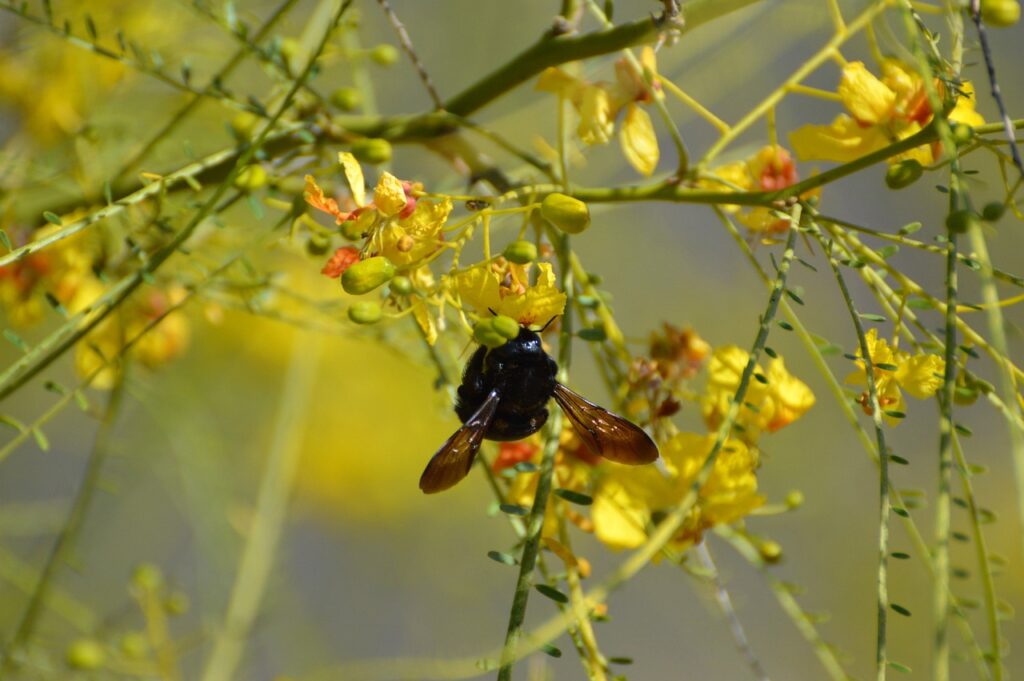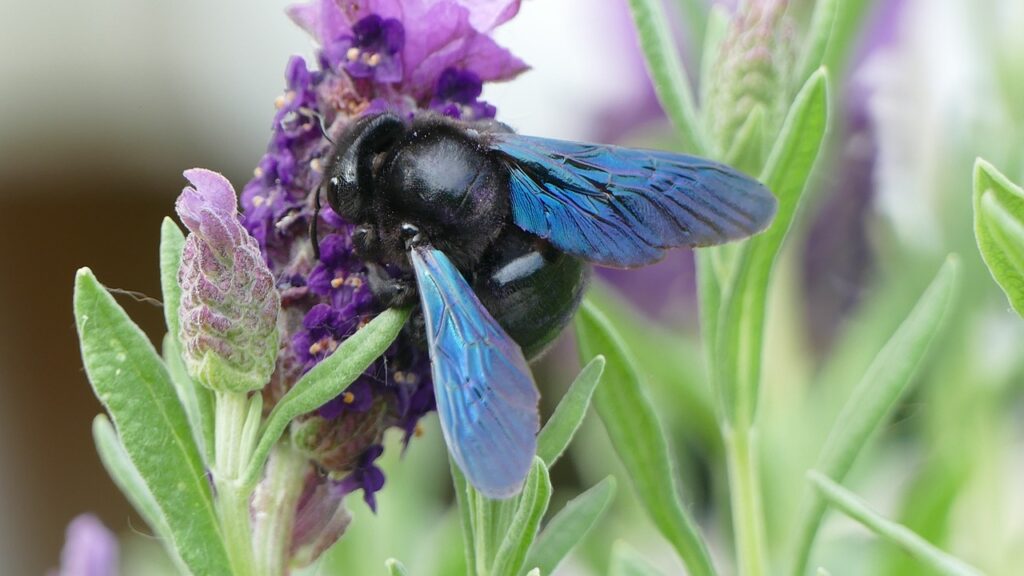
Las Vegas is Abuzz With Mojave Native Bees
Today is World Bee Day! Did you know that there are 1,000 native bee species in Nevada to celebrate with? Bees are one of the most familiar pollinators, meaning that they help plants reproduce by spreading pollen between flowers. And our native bees are no exception!
Since pollinators are responsible for helping 85% of the world’s flowering plants to reproduce, bee diversity is extremely important to a healthy ecosystem. Odds are, the bees that you’re most familiar with are European honey bees. Can you guess where they’re originally from? European honey bees were introduced to the United States more than 400 years ago for farming.
However, Las Vegas has a rich diversity of native bees that deserve just as much fame as their European relatives. Read on to meet some of the native bees of Las Vegas.
Why Native Bees?
Native bees are bees that naturally occur in the Mojave Desert and are adapted to our climate.
Female bees will visit thousands of flowers throughout the day to collect pollen to bring back to their nests for their young to eat. As they roam, pollen granules fall between flowers, so we wouldn’t have our beautiful pink desert willow flowers or yellow brittlebush flowers without thousands of years of bee/plant relationships.
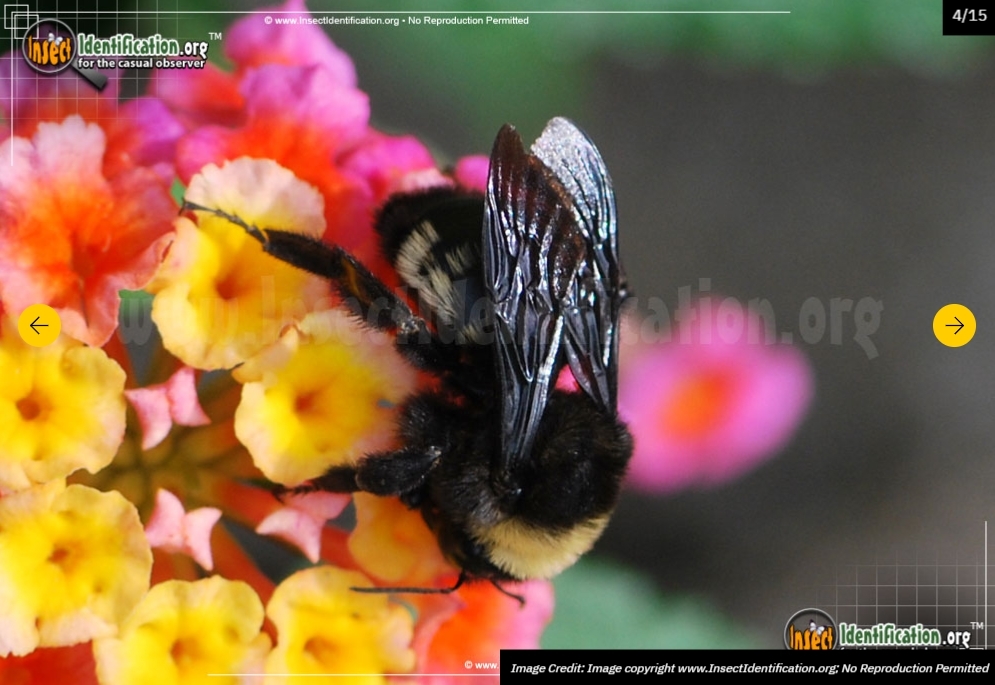
Besides pollination, many native bees nest underground, so they help aerate, move, and fertilize the soil. Not to mention, bees are a rich source of protein for insect-eating birds, lizards, small mammals, and even other insects.
Bumblebees
Bumblebees are our largest native bees with fluffy dark bodies and yellow, orange, white, or black stripes. They store pollen in the branched “hairs” on their back legs and a little yellow “pollen basket”, which gathers pollen and makes them look like they’re wearing yellow socks with the more pollen they gather.
In addition, bumblebees are well-known for their ability to “buzz pollinate” plants that have harder-to-reach pollen. During buzz pollination, bumblebees hold a flower blossom and vibrate their wings at just the right frequency to dislodge tightly packed pollen that was deep in the flower.
Bumblebees are the only bee in North America that is completely social, meaning they live in colonies with a queen bee and workers, much like the European honey bees that you may be familiar with. But unlike honey bees, bumblebees prefer to nest underground, such as in old rodent burrows or under sheds.
Carpenter Bees
Carpenter bees are our second largest native bee, but they lack the “fluff” of bumblebees and are more metallic black in color. They can be solitary or communal, meaning they either nest alone or alongside others. But even when nesting alongside other bees, they don’t build traditional hives or have a social structure like honeybees and bumblebees.
So although they may share the same tunnel entrance excavated in dead wood, they are completely solitary except for the breeding season. Males attract females with a rose-like scent, and the female will lay her eggs on a “particle board” of rotting wood for her young to eat.
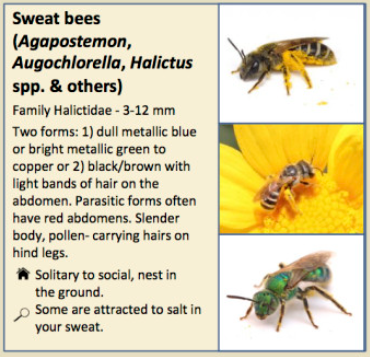
Sweat Bees
Yes, they get their name because they like your sweat. Sweat bees are small, slender bees that can range from dull metallic blue to bright metallic green or even copper.
Sometimes sweat bees land on sweaty people because they are attracted to the salt found in perspiration.
But don’t worry, these bees rarely sting, and once they lick up some salt, they’ll leave you in peace. Sweat bees are solitary and prefer to nest underground or in rotting wood.
Leafcutter Bees
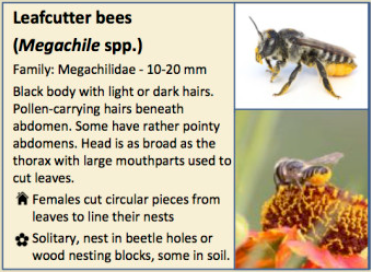
Have you ever seen a plant that looks like it has little discs cut out of it? Chances are, that’s the handiwork of a leafcutter bee. About the size of a honeybee, leafcutter bees are black with narrow yellow banding. They are solitary, and females lay their eggs underground or in rotting wood.
Female leafcutter bees cut an elliptical shape out of thin leaves as a protective lining to lay each of her eggs inside, which may be 35-40 eggs. She also leaves a little pollen packet for her young, so when the egg hatches, the baby bee has food to eat. When the female is all done laying eggs, she’ll seal the hole with a waxy residue to protect them.
Leafcutter bees will take leaves from our native brittlebush and creosote, as well as nonnative garden plants like rose bushes and bougainvillea.
(Article continues after the ad)
Please follow our fantastic site sponsors! They make content like this possible! 🙂
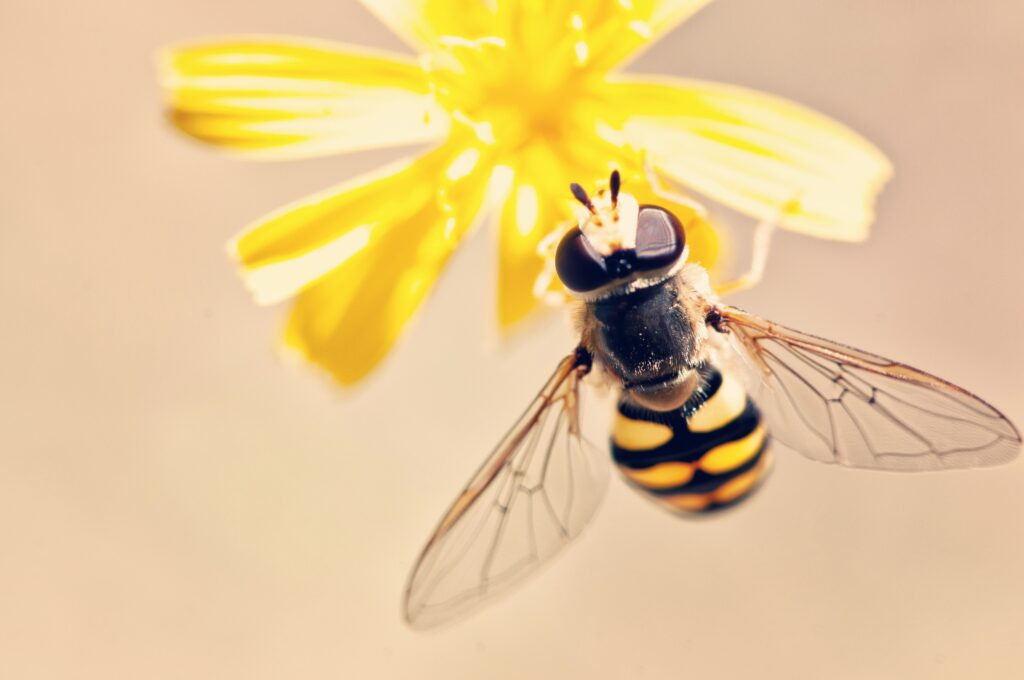
“Bee” Wary of Lookalikes!
In the insect world, it pays off to look like a bee. There are plenty of flies that have evolved to look like bees so that they can escape predators.
The best way to tell bees and bee lookalikes apart is by counting the number of wings that you see. All bees have two pairs of wings but flies only have one pair of wings.
#GetinMotion to Help Native Bees
Now that you’ve met some of our local bees, what ones will you notice throughout the day? And, are you ready to #GetinMotion to help native bee species?
Make a Bee-friendly Home
One of the best ways to help bees and other pollinators is to limit the use of pesticides around your home and provide nesting material. This means leaving leaf litter and dead wood because many ground-nesting bees prefer to nest beneath or inside these sheltered, shady areas. You can also buy bee houses to attract cavity-nesting species like leafcutter bees, but be sure to do your research on how to best clean these bee houses to prevent them from getting overgrown with mold or attracting harmful mites. Here is a helpful resource on what to look out for when purchasing a bee house.
Plant Flowers for Native Bees
Another way to help native bees is by planting native plants to attract pollinators. Since these bees evolved alongside our native plants, they are highly attracted to them. Native plants support bee diversity, and bee diversity supports native plants. It’s a win-win for bees, plants, and other wildlife like birds. Some native trees that bees love are desert willows, honey mesquites, catclaw acacias, and our near-native (originally from the Sonoran Desert) palo verde trees.
Support Bee Conservation
You can also support a nonprofit like the Xerces Society, an invertebrate conservation organization that focuses on research, education, and conservation of pollinators and other insects throughout the world. And, check out the Bee Conservancy, a nonprofit organization dedicated to protecting bees, safeguarding the environment, and securing food justice through community-based education, research, habitat creation, and advocacy.
Don’t Exterminate; Relocate!

Lastly, help spread the love of bees! Share what you learned with others so they can help protect our native bees and honey bees alike! If you or someone you know finds a hive that needs to be removed, don’t call an extermiantor – call a bee removal company. One local company, Vegas Bees, is focused on addressing climate change’s impacts on bees by dedicating themselves to protecting bees by relocating them instead of killing them.
Show Your Love
Show your love for our native bees with MiM Mag’s ‘Save the Bees‘ vinyl sticker!
This sticker is currently on sale, no code needed! And, as a Sticker for Solidarity, each purchase of this design results in a $1 donation made to a related organization. In this case, it’s the Bee Conservancy!
This sale runs through the end of May. Free shipping on all stickers!
Like Morrigan’s articles? Read more of her work here!
Thank you to our supporters and sponsors!
As always, we want to thank our Patreon’ Cultivator’ supporters and sponsors who help make content like this possible!
The following Patron(s) supported the production of this article:
Crystal Gropp
The following sponsors supported the production of this article:
Viva La Compost & LunaKai Lash

